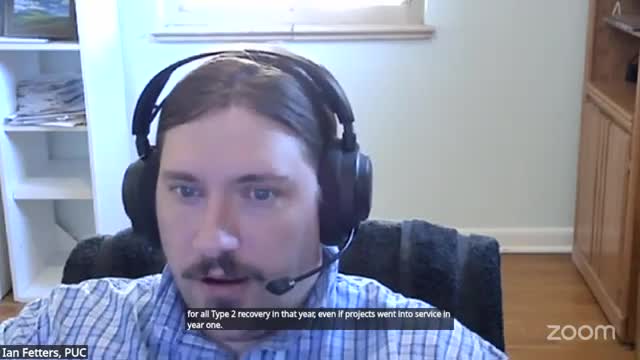Commission rejects utility's proposed performance mechanics; directs staff to flesh out interconnection, reliability, customer-service and load-shape screens
October 29, 2025 | Public Utilities Commission, Governor's Boards and Commissions, Organizations, Executive, Colorado
This article was created by AI summarizing key points discussed. AI makes mistakes, so for full details and context, please refer to the video of the full meeting. Please report any errors so we can fix them. Report an error »

Commissioners spent the bulk of deliberations on how to structure a performance-based GMAC for the subset of distribution spending the utility classifies as Type 2. Under Senate Bill 24218, certain performance criteria (interconnection timelines, energization timelines and flexible-load targets) are identified in statute; commissioners debated whether the statutory list is a floor or an exclusive list of metrics.
Commissioner Gellman told colleagues he would not accept the company's mechanical approach to Type 2 recovery because the statute's 7(b)(3) language is permissive and because accelerated recovery should be tied to demonstrated improvements at the time projected costs are placed in rates. "The improvement must have occurred by the time the projected Type 2 costs are going to be placed in rates for performance-based accelerated cost recovery," he said.
Commissioners agreed on several principles: interconnection timelines must be part of any performance scheme; reconstituting interconnection screens should aim to require performance above existing minimum timelines rather than merely meet the rule; reliability metrics should be included (using systemwide outage and reliability indices identified in the staff report); customer service and billing measures should be tracked; and long-term performance should be tied to shifting beneficial electrification (BE) and electric vehicle (EV) loads off system peak.
Rather than adopt a deterministic formula at this meeting, the commission directed staff to pursue a structured process in 2026. Advisory staff proposed a June 1, 2026 filing in which the utility would submit 2025 (and Q1 2026 to the extent available) interconnection and reliability data, followed by a 40-day comment window and a company reply period. That record would inform a commission decision before the November 1 advice-letter filing.
Commissioners discussed practical timing and phased incentives. Several commissioners favored a phased, increasing set of discretionary Type 2 incentives: limited or no Type 2 acceleration for 2026 spending (because performance screens will not be established by the immediate advice-letter deadline), followed by targeted incentives in the 2027 filing and larger, binding incentives for 2028 once BE/EV load-shape metrics are operational.
Ending: The commission rejected PESCO's proposed 100% prospective recovery with a later clawback and directed staff to design a June 2026 process to set performance screens that will determine the level and timing of any accelerated Type 2 GMAC recovery.
Commissioner Gellman told colleagues he would not accept the company's mechanical approach to Type 2 recovery because the statute's 7(b)(3) language is permissive and because accelerated recovery should be tied to demonstrated improvements at the time projected costs are placed in rates. "The improvement must have occurred by the time the projected Type 2 costs are going to be placed in rates for performance-based accelerated cost recovery," he said.
Commissioners agreed on several principles: interconnection timelines must be part of any performance scheme; reconstituting interconnection screens should aim to require performance above existing minimum timelines rather than merely meet the rule; reliability metrics should be included (using systemwide outage and reliability indices identified in the staff report); customer service and billing measures should be tracked; and long-term performance should be tied to shifting beneficial electrification (BE) and electric vehicle (EV) loads off system peak.
Rather than adopt a deterministic formula at this meeting, the commission directed staff to pursue a structured process in 2026. Advisory staff proposed a June 1, 2026 filing in which the utility would submit 2025 (and Q1 2026 to the extent available) interconnection and reliability data, followed by a 40-day comment window and a company reply period. That record would inform a commission decision before the November 1 advice-letter filing.
Commissioners discussed practical timing and phased incentives. Several commissioners favored a phased, increasing set of discretionary Type 2 incentives: limited or no Type 2 acceleration for 2026 spending (because performance screens will not be established by the immediate advice-letter deadline), followed by targeted incentives in the 2027 filing and larger, binding incentives for 2028 once BE/EV load-shape metrics are operational.
Ending: The commission rejected PESCO's proposed 100% prospective recovery with a later clawback and directed staff to design a June 2026 process to set performance screens that will determine the level and timing of any accelerated Type 2 GMAC recovery.
View full meeting
This article is based on a recent meeting—watch the full video and explore the complete transcript for deeper insights into the discussion.
View full meeting
